Wismar was one of nearly 200 medieval towns and guilds of 16 Northern European countries that joined the defense and trading league. I learned that Hansa or Hanse means league or company. The Hanse dominated trading from the mid-thirteenth century for nearly four hundred years. Although most participants bordered the Baltic or North Seas, The Hanse included towns in countries as far away as France and Iceland.
Today the Wismar town center is a UNESCO World Heritage Site. It is comprised of over 1700 buildings with over 1600 owners. Wismar is located on the Baltic Sea. Many of the town buildings have been restored to their medieval splendor. One couple who restored their building faced years of approvals through seven committees and invested over one million Euros.
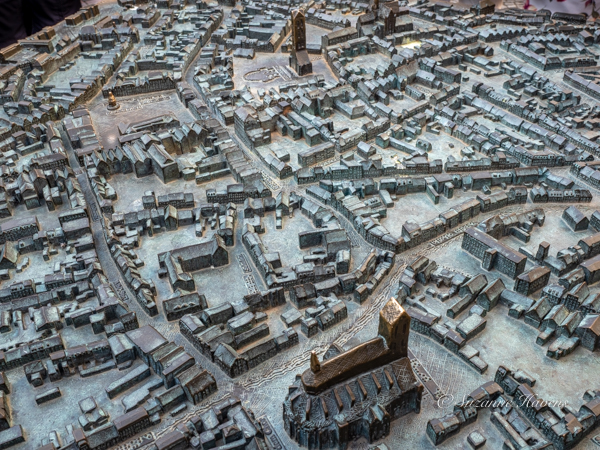
A cast-bronze relief sculpture with Braille gives the sighted and unsighted an overview of the medieval city
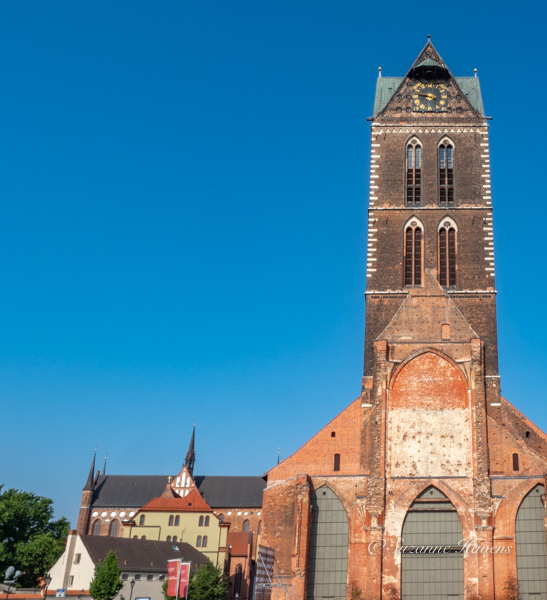
St. Marien Church was destoyed in WWII. The tower has been rebuilt with some of the original cast bricks
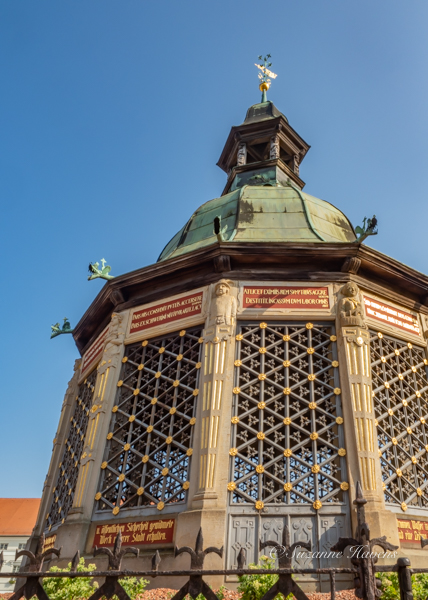
Wasserkunst is a 16th c. spring-fed well located at the market place
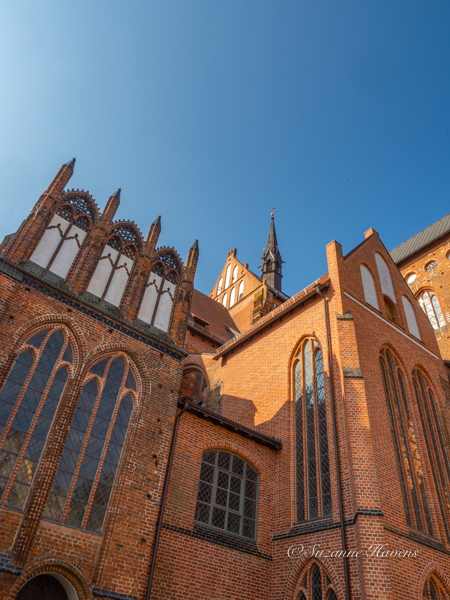
St. George’s was a medieval Gothic red brick church and now a performace hall
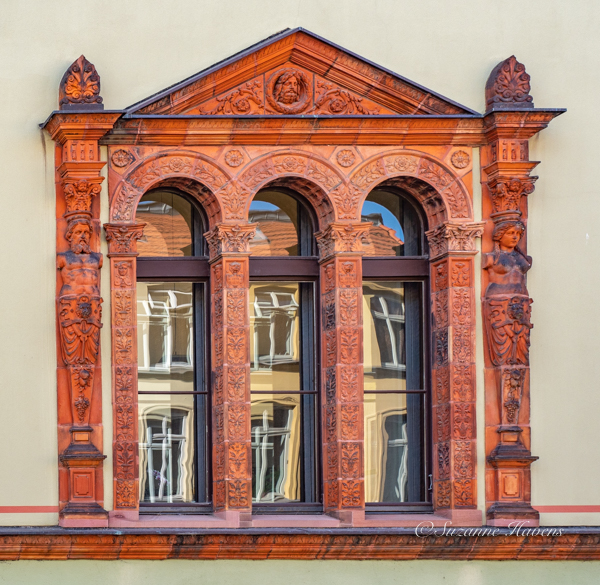
The cast bricks allow the architects to form decorative elements
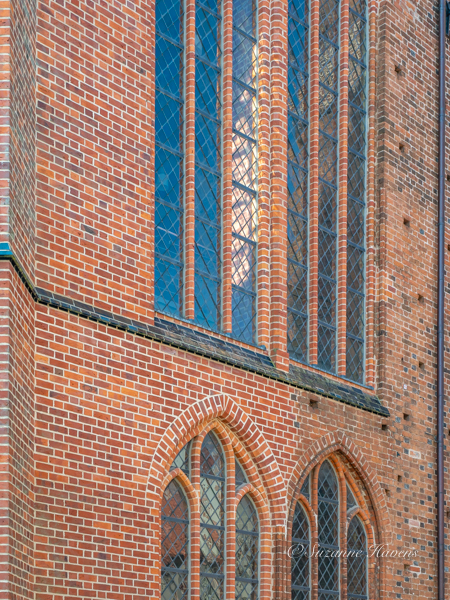
A detail of St. George’s Church
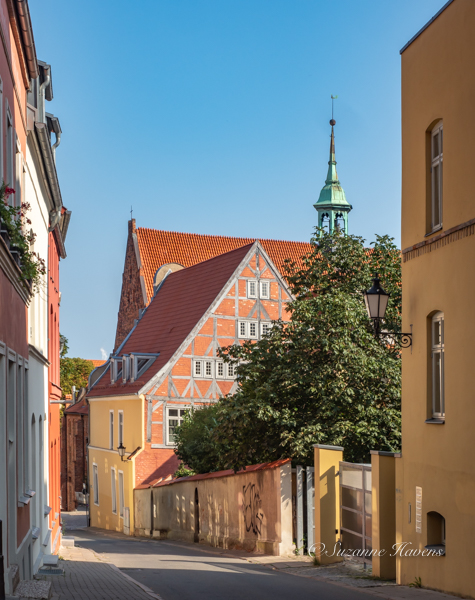
The pristinely restored medieval town has not escaped graffiti
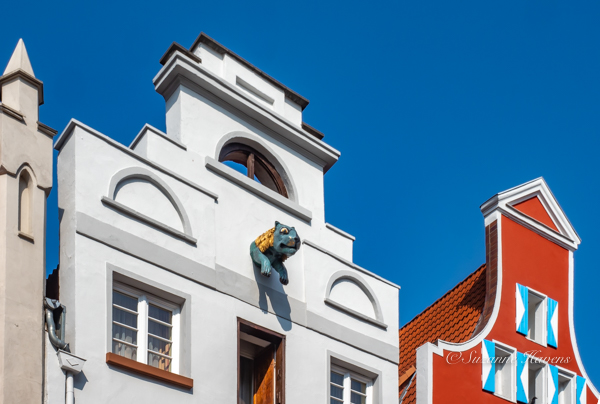
Is that a blue-green cat jumping out of the building?
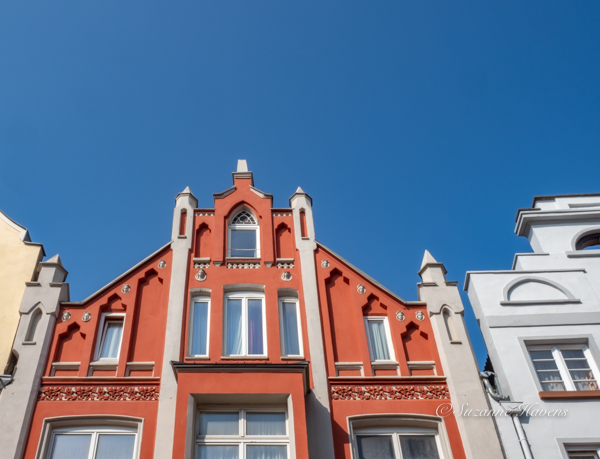
Maidens in relief sculpture guard this building
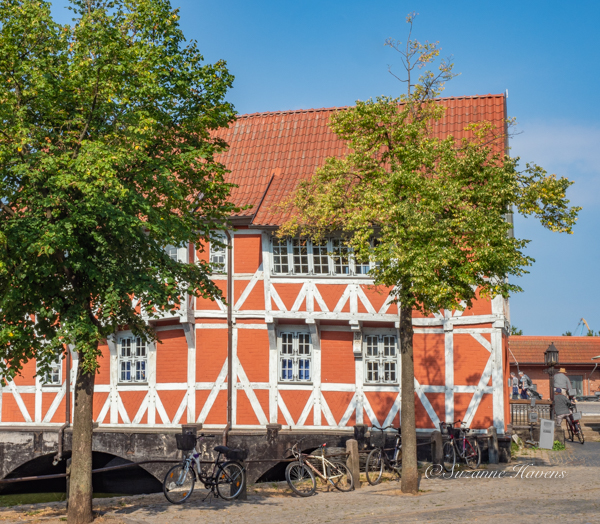
This medieval structure spans the canal. Bikes are a popular way to get around Wismar
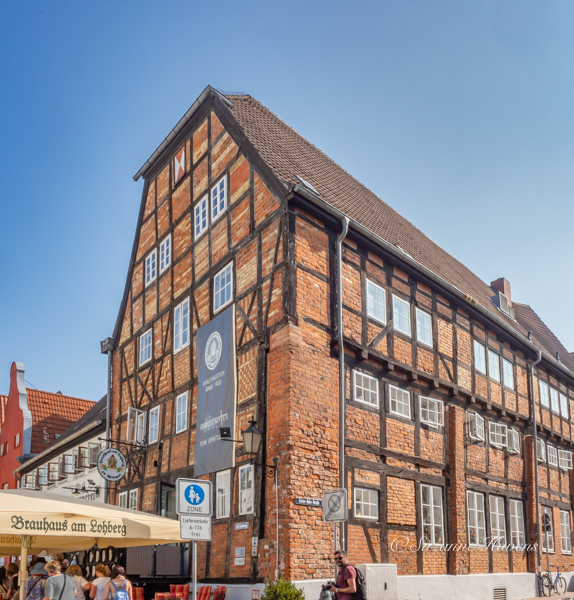
Brauhaus am Lohberg has been brewing beer since 1452!
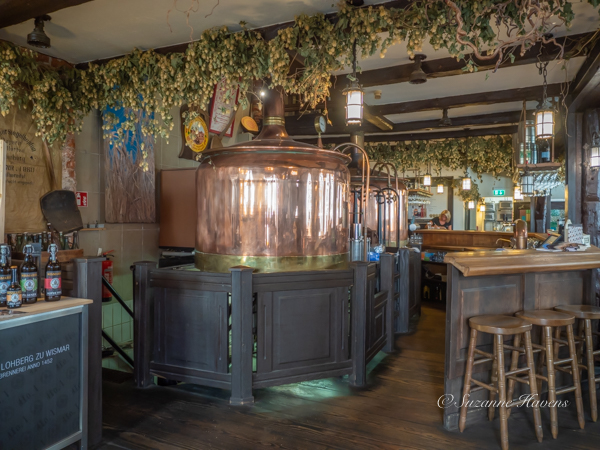
Dried hops decorate the brewery
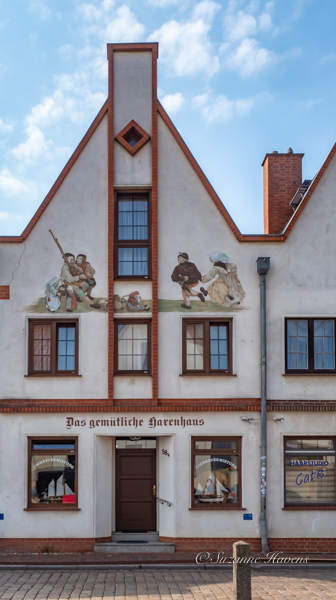
Das Gemutliche Havenhaus, The Cozy Havenhouse, with sailboats in the windows rents rooms
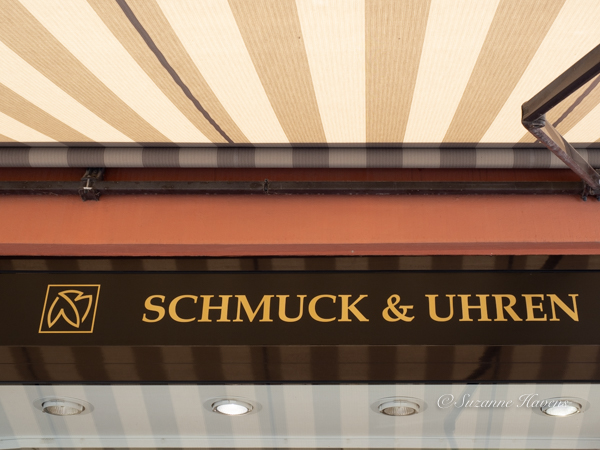
This cracked me up. Even though the words look suspicious, they mean jewelry and watches.
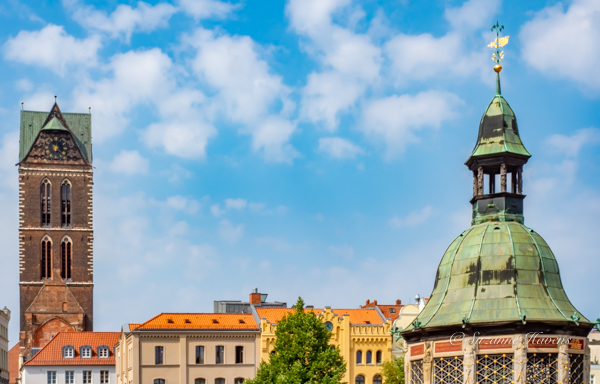
The well, St Marian’s Church tower and the main square